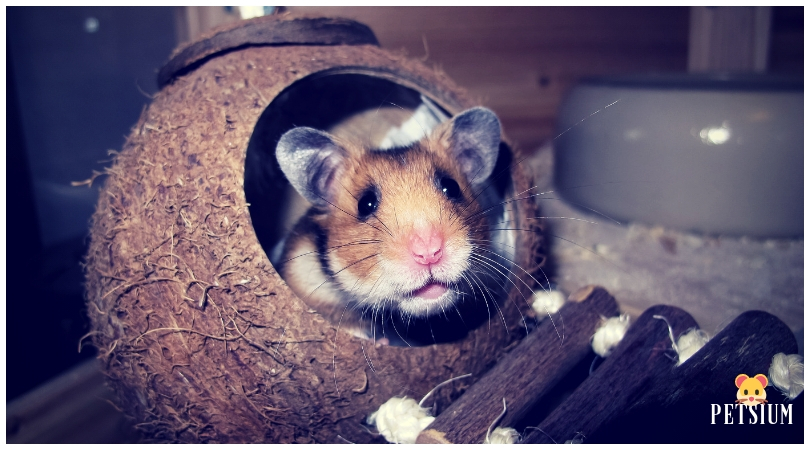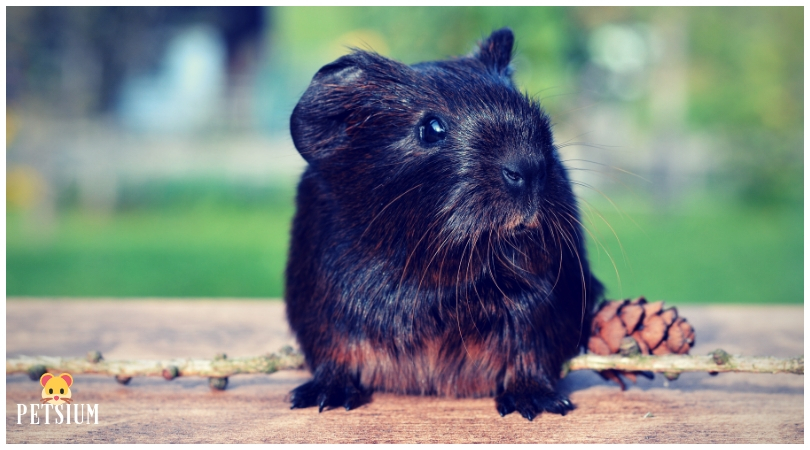Hamsters are small rodents that are very popular around the world; they make great pets and a reasonably easy to house and look after. They come in a wide range of colours and different fur types although they still keep their natural instincts from their ancestors such as sleeping all through the day.

Buying a Hamster
Before buy spend some time observing the hamsters, this can be surprisingly enlightening. For example, a hamster that is ill or is soon to become ill may appear reserved and isolated from the other hamsters, this may be accompanied by a hunched or lethargic appearance.
If awake hamsters, you should determine if the hamsters are active and are able to walk without difficulty. A hamster that is limp, unsteady or displays unusual walking behaviour may have physical or neurological issues.
While assessing the hamster, you should also note his overall build. He should be well proportioned, there shouldn’t be any excess fat, though a ‘chunky’ build is preferred to a thin, mouse like structure. You should also take this opportunity to also palpate the hamsters body (the abdomen in particular) in search of any potential lumps such as tumours.
When content with your findings, you are then able to select a hamster with confidence. If you have selected a female, check her abdomen is not particularly swollen – a pear shape may indicate pregnancy. Furthermore, check the genders of all her cage mates, it is not uncommon for an unidentified male to be placed with females and the new owner to suddenly have much more hamsters then they had bargained for.
What to Look for When Buying a Hamster
- Ears: Clean, no sign of injury or infection.
- Eyes: Responsive, clear and physically intact. Bright and bold ideally.
- Nose: Clear, not particularly wet.
- Mouth: The hamster should not drool or have swollen pouches.
- Teeth: Short and even, yellowing is normal though young hamsters may have white teeth.
- Skin and Fur – Should be clear of foreign bodies (i.e. mites) and consistent, there shouldn’t be patches of sparse fur. Skin should be smooth and free of abnormalities such as flaking or inflammation.
- Spine: Even and not particularly prominent.
- Genitals: Should not be swollen. Discharge should not be present, nor should faecal or urine staining (checking in particular for diarrhoea). Also check the hamster’s genders at this point.
- Feet/Paws: Should not be swollen or sore, hamsters kept on wire or provided with wire wheels may develop sores or a bacterial infection in the feet. The nails should be intact and not excessive in length.
Types of Hamster
The most common hamster is the Syrian hamster, which has increased dramatically in numbers over recent years, with many new color variations being found in parts of Russia. This increase in color varieties has also increased the hamsters’ popularity as a household pet.
Syrian Hamster
A Syrian hamster in its most original form shows off a golden coat with tiny black shades in individual hairs, their ears are a dark grey color, almost black, with their under bodies being a contrasting color of a whitish shade. Other common Syrian hamsters are a darker golden color with black ears, and a lighter golden colored hamster with a pure white underbelly.

One of the most interesting colors of Syrian hamsters that have been bred is a creamy colored hamster, which is available with ruby, red and black eyes. One of the most colorful hamsters is the Syrian cinnamon hamster that has an orange-colored fur.
Many find the white Syrian hamster attractive, there are three different forms is this white hamster and the difference is the eyes and ears have a different pigmentation. The Albino Hamster has pure red eyes and no color anywhere else, another form is all white but with dark colored ears that are either brown or black and the final of the three has black eyes, pinks ears and the clean white fur. There are also chocolate colors and even a pure black variety of hamster, they all share the common theme of having their coat all one color.
There is a huge potential for many different types of hamster as there are now many coat types that have been developed in supplement of the short haired hamsters. One popular mutation is the longhaired Syrian hamster, also known as Rexes or Teddies; their long curly hair on their coat is their distinguishing feature.
Campbell Russian Dwarf Hamsters
The Campbell Russian Dwarf hamster is known as a very sociable hamster and unlike Syrian hamster, Campbell hamsters can be kept in colonies and can live together happily. You will often see them all curled up together in their bedding, quite content with one another.
Campbell’s are known to make quite good all round pets and are more suited to children than hamsters such as the faster Roborovski. This is because generally, Campbells are tamer, after you have devoted some time to your hammie. They are also more easily handled. Remember though, any child who has a pet hamster should be supervised when playing and handling to minimise any accidents or unnecessary stress to the hamster.
The Campbell when fully grown can reach up to around 4 inches and colours can vary depending on the breeding. Some are a grayish brown (wild colour), others a sandy cinnamon colour with a white belly or dull brownish orange with a white belly, albino with red eyes, a bluish gray and finally Campbells can be black all over.
Campbells also have different types of marking on their fur, these are: mottled (irregular white patches), ruby-eyed mottled (appears as irregular black patches) and platinum (white furs mingling amongst the hamsters fur/coat).
In the wild, Campell hamsters have been known to dig burrows up to 3 feet in depth and then line them with wool gathered from surrounding herd plains. As such, if you can provide your hamster with a nice deep cage filled with wood shavings, you will be providing your hamster(s) with a wonderful opportunity to dig and burrow. Best of all, it’s great fun watching them as they dig away!
Roborovski Hamsters
Roborovski or „robo“ hamsters as they are commonly known are the smallest of all hamsters and as definitely the fastest! Because of this, robo’s are often suited to older owners (teenagers up). Young children will have difficulties holding them and as they are so fast, they can escape easily.
Robos, like any hamster are a commitment to be taken seriously, as they typically can live up to three years and sometimes even longer. Typically robo hamsters make brilliant pets if you enjoy watching an energetic hamster running around, climbing and swinging from toys. Robos however are quite shy animals and as such, often don’t like to be held or touched. They are difficult to tame, unlike other types of hamsters such as the Syrian.
Roborovski hamsters love to run, so an exercise wheel is essential. Robo’s have been know to run miles and miles in the wild at night in search of food. Equally once your robo has an exercise wheel they can run mile after mile throughout the night. Don’t be surprised to be kept awake at night by the sound of your hamster running in its wheel!
Robo hamsters are also less known to climb but they LOVE to dig. So if you can get a cage with a deep base, so you can provide plenty of wood shavings and some tubes as well, your hamster will have a brilliant time digging away.
Winter White Hamster
The Winter White hamster is similar to the Campbell Dwarf hamster in size and shape but differs in the colour of its fur. Winter White hamsters are remarkable in the fact that they have the ability to alter the colour of the fur from a light grey to a bright snow white colour.
This colour alteration is triggered by the length of days changing as seasons change throughout autumn and winter. Other types of winter white hamsters can be found, sometimes with a slight orange or pink tinge to their fur but these hamsters are rare and normally only acquired from specialist breeder.
Hamster Foods
You will feed your hamster on hamster mixes that are available at pet shops and some large supermarkets. They contain a variety of sunflower seeds, cereal seeds and peanuts. The oily seeds should only be offered to your hamster in small quantities as they are very high in fat and can lead to obesity if they are the bulk of your hamsters diet. One option is to use commercial pellets that contain all the nutrients needed, but these can be expensive in the pet shops.
When choosing a container for your hamster food, look for one that is fairly heavy such as a heavyweight earthenware bowl. Choose a heavy bowl because your hamster will move it if it is light and moveable, the next thing you know they will have dragged their food bowl across the others side of their cage and it will be covered in bedding and other mess from the cage.

The best way to give water to your pet is via a water bottle that affixes to the side of the hamster cage with the nozzle sticking through. The can be obtained at any mainstream pet shop.
Each day you should offer your hamster some fresh green food like a piece of apple that you can stick through the side of the cage bars for them to nibble on.
Hamsters hoard food naturally so it is up to you to keep an eye on what they are eating and provide them with enough food but not too much food. If they are given too much food they will carry it in their pouches back to their nest and hoard it away.
Take care if they are taking fresh food back to their nest as the fresh foods can start to rot quickly. Check the bedding regularly as it can start to smell if left with food inside and could be harmful to your hamster’s health.
There are useful treats sold commercially in the pet shops that you can use to help tame your hamster by offering as treats. Something else to consider for your hamsters health are vitamin and mineral supplements that you can add to fresh green foods that you stick through the cage to provide added nutrition in their diet.
Hamsters Great Pets for Kids
Hamsters make great pets for children, especially as a first pet, but remember that hamsters are not the most social of pets yet they can still be handled and will usually only bite occasionally.
It is very important for you as the owner to provide all the items necessary for your hamster to live a healthy life. Obviously they need food and water that is changed regularly but they also need many other items that you may have not thought of yet, and of course you’ll need a cool name for your new pet which you can choose from our hamster names list.
Your hamster will need various things to chew on so they can keep their incisor teeth in good condition, a branch from a apple tree (that has no chemicals or bird droppings on) serves perfectly for this purpose. Try roasting some bread crusts in the oven and serving it to your hamster, this acts as a helpful addition to their diet.